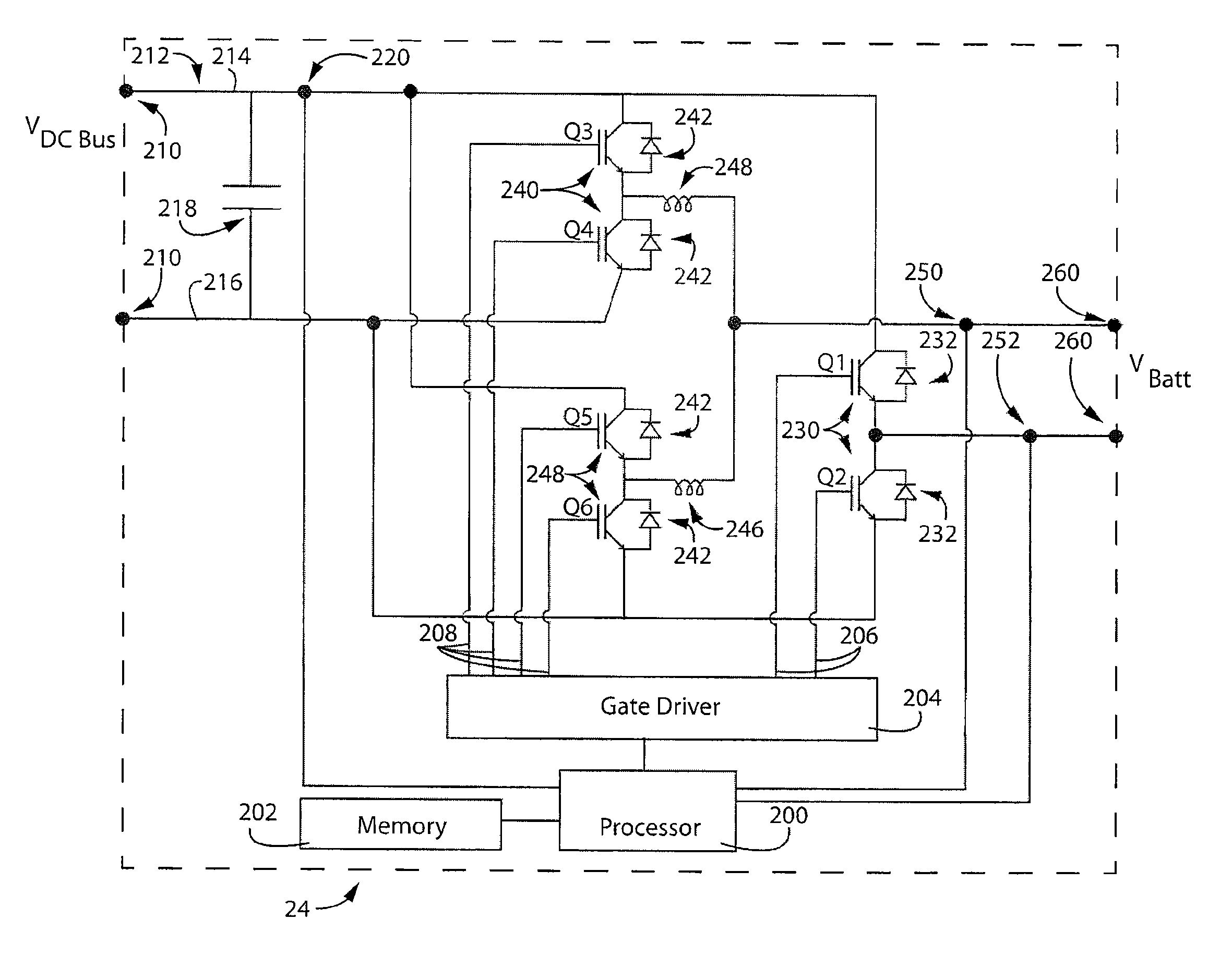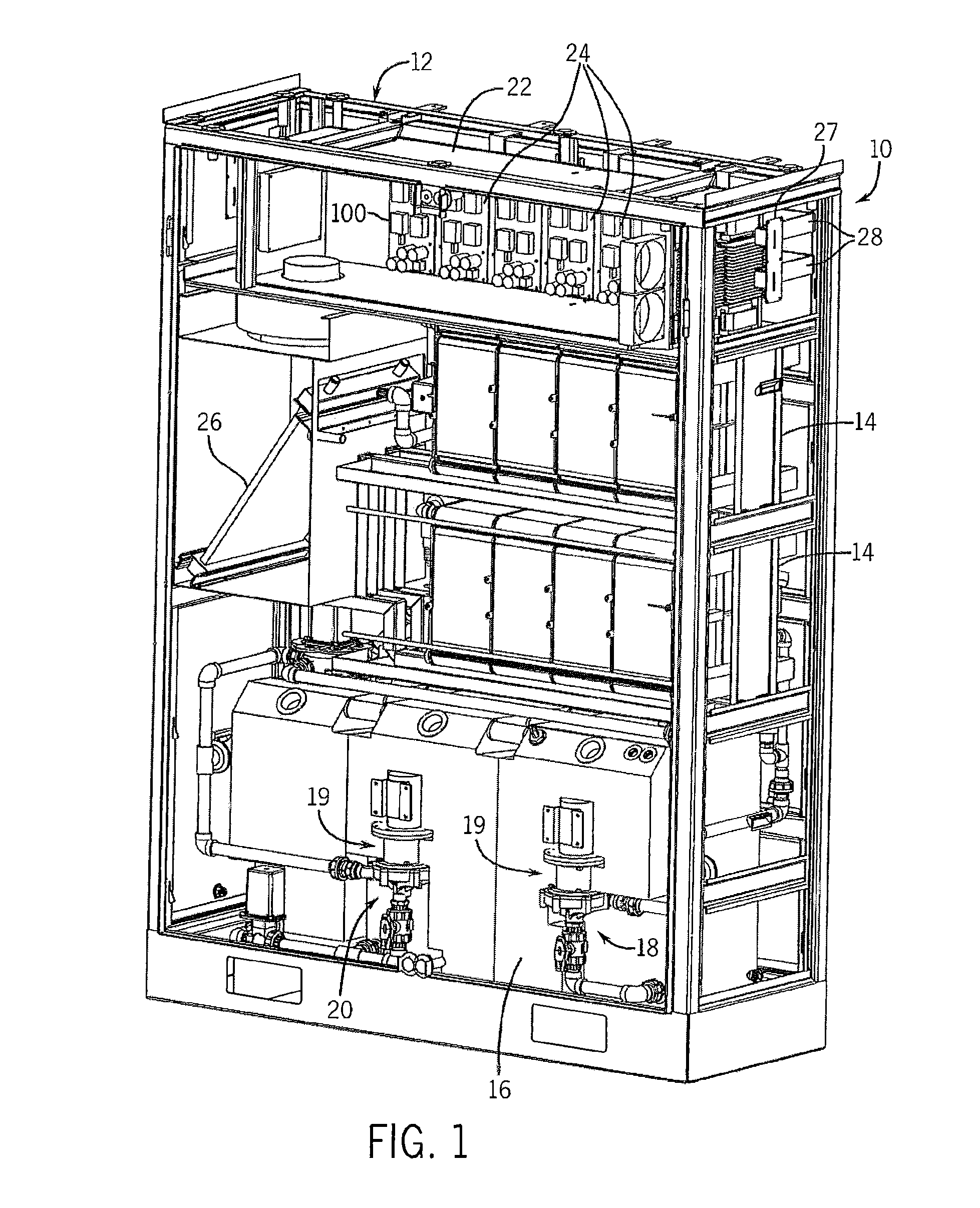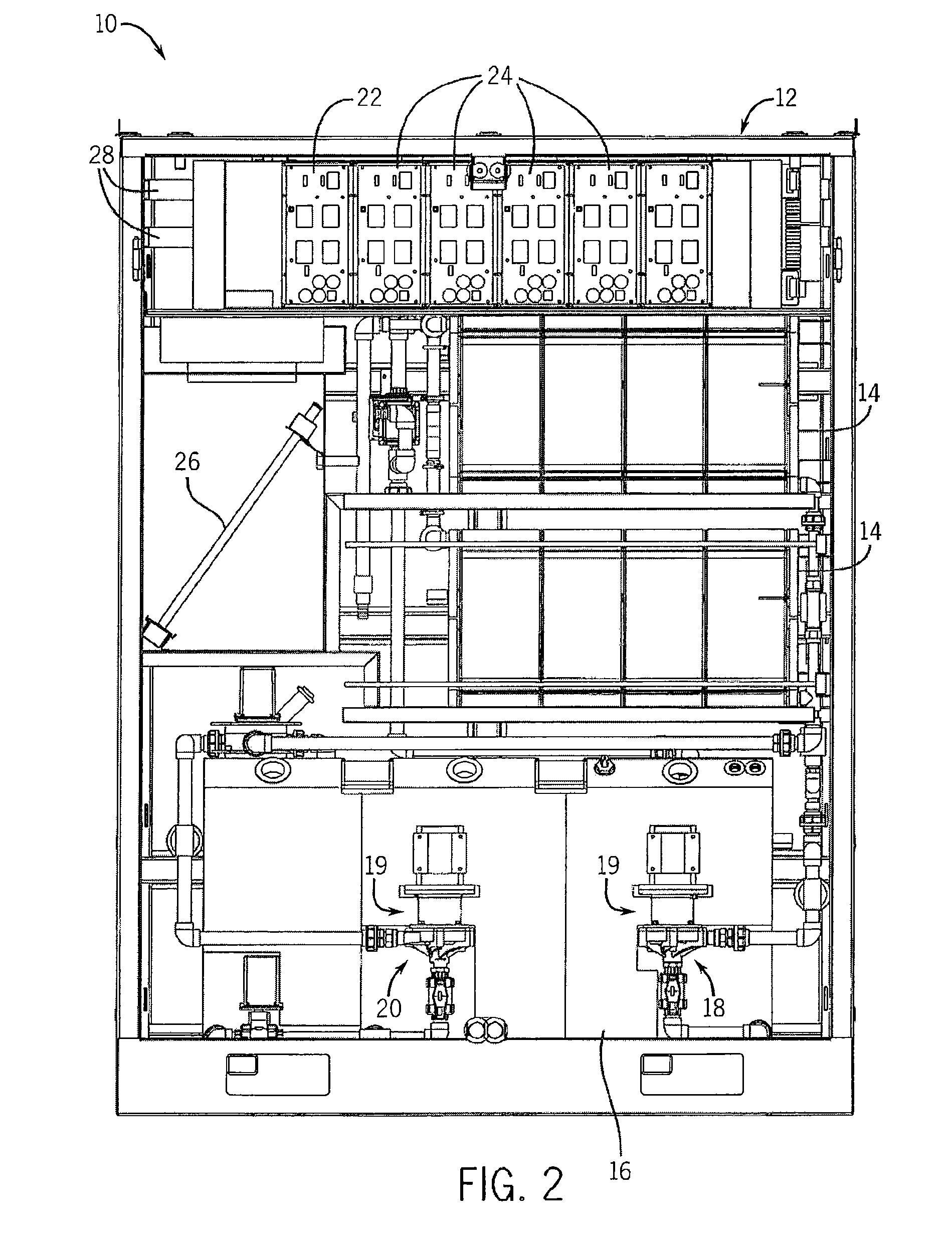Reversible polarity operation and switching method for ZnBr flow battery when connected to common DC bus
a technology of dc bus and flow battery, which is applied in the direction of dc source parallel operation, electrolyte manufacturing process, zinc-halogen accumulator, etc., can solve the problems of lead-acid batteries that are not environmentally safe, lead-acid batteries have limitations in terms of performance and environmental safety, and typical lead-acid batteries have very short life periods in hot, so as to improve the structure of the cell stack, and reduce manufacturing costs
- Summary
- Abstract
- Description
- Claims
- Application Information
AI Technical Summary
Benefits of technology
Problems solved by technology
Method used
Image
Examples
Embodiment Construction
[0063]With reference now to the drawing figures in which like reference numerals designate like parts throughout the disclosure, the electrolyte battery module and system according to one embodiment of the present invention is illustrated generally at 10 in FIGS. 1-4 and 14-21. The battery system 10 includes as general components a cabinet 12, an assembly of cell stacks 14 positioned within the cabinet 12, a tank assembly 16 positioned within the cabinet 12. The tank assembly 16 includes an anolyte flow system 18 (FIGS. 5-9) and and a catholyte flow system 20 (FIGS. 10-13) each having a pump 19 and suitable piping 21 operably connected to the cell stacks 14. The anolyte is the portion of the electrolyte in proximity to the anode, or negative cell, in the battery, and, the catholyte is the portion of the electrolyte in proximity to the cathode, or positive cell, in the battery. In a discharged state, the electrolyte in each system 18, 20 is substantially identical. As the cell stacks...
PUM
| Property | Measurement | Unit |
|---|---|---|
| Flow rate | aaaaa | aaaaa |
| Polarity | aaaaa | aaaaa |
| Current | aaaaa | aaaaa |
Abstract
Description
Claims
Application Information
 Login to View More
Login to View More - R&D
- Intellectual Property
- Life Sciences
- Materials
- Tech Scout
- Unparalleled Data Quality
- Higher Quality Content
- 60% Fewer Hallucinations
Browse by: Latest US Patents, China's latest patents, Technical Efficacy Thesaurus, Application Domain, Technology Topic, Popular Technical Reports.
© 2025 PatSnap. All rights reserved.Legal|Privacy policy|Modern Slavery Act Transparency Statement|Sitemap|About US| Contact US: help@patsnap.com



